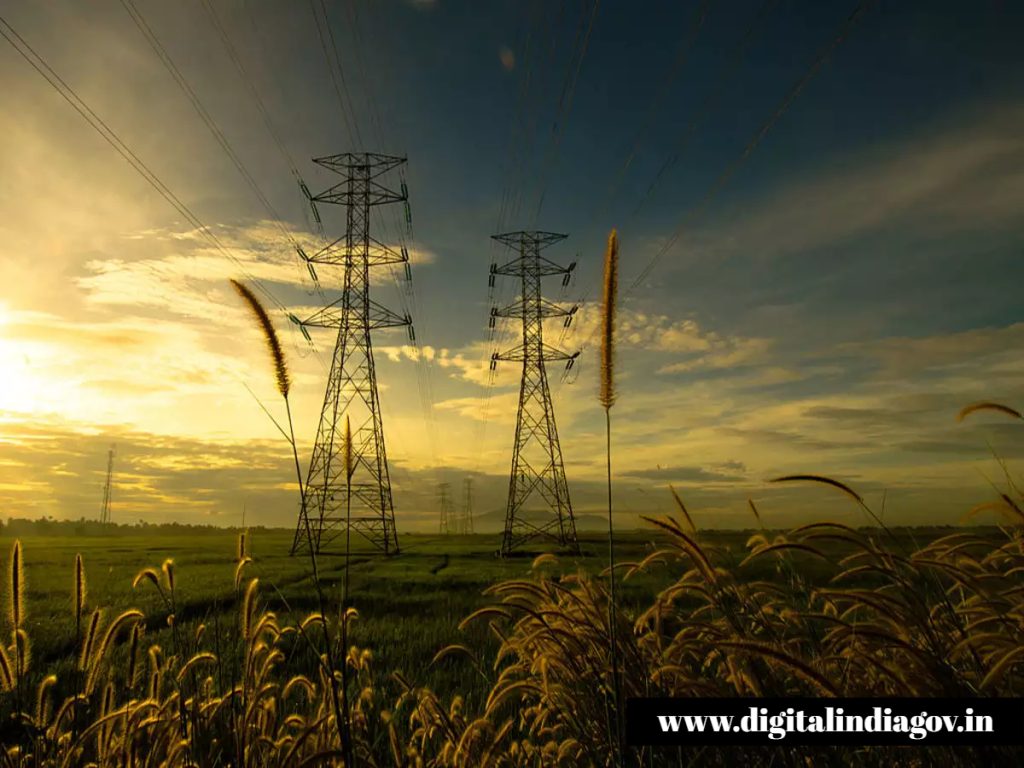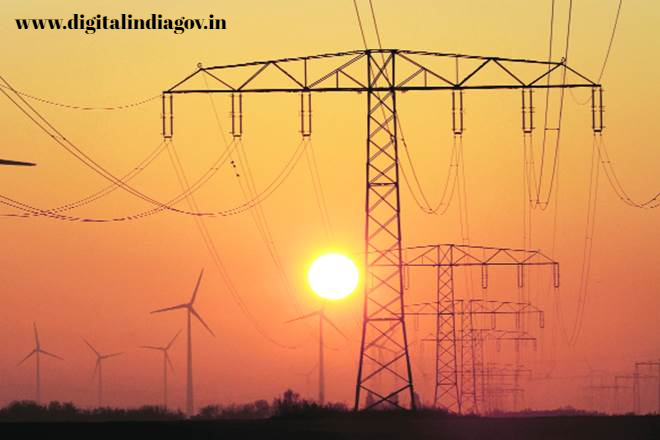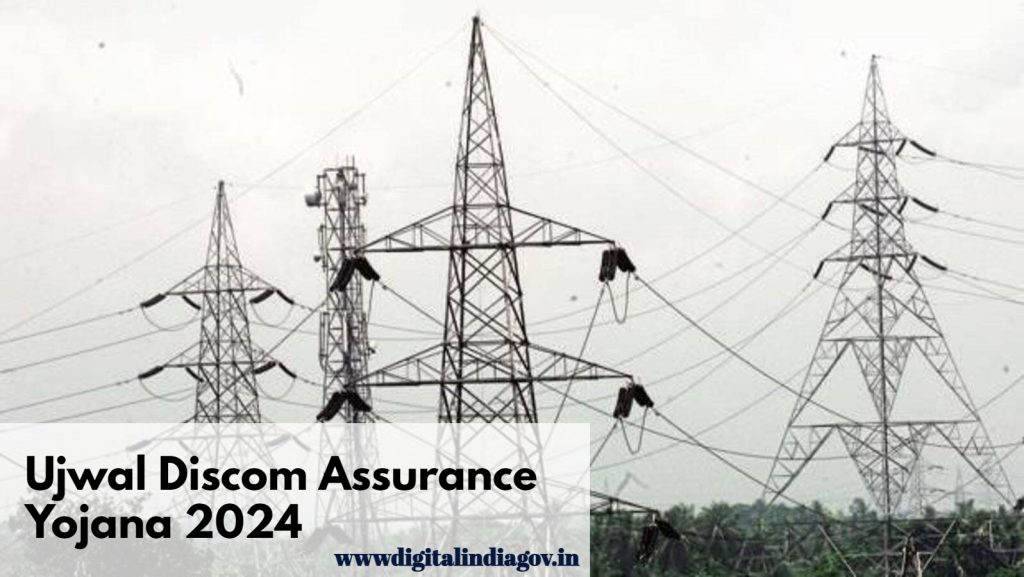Ujwal Discom Assurance Yojana: On November 5, 2015, the Indian government introduced the Ujjwal Discom Assurance Yojana. The goal of the Indian government’s Ujjwal Discom Assurance Yojana is to lower the debt of state-owned power distribution corporations by offering 24/7 inexpensive and accessible electricity. additionally to offer resources for collaboration in the electricity distribution company’s operational and financial restructuring.
When the program was first introduced in 2015, the goal was to run the Ujwal Discom Assurance Yojana for four years, or until 2019. However, the government ultimately decided to extend the program’s duration to five years, or until 2019, as part of the Union Budget 2020–21, to improve both the state and the power distribution industry. It has been reopened to lower the debt of owned electricity distribution firms.

Also Read: Rupashree Prakalpa Scheme
Contents
Ujwal Discom Assurance Yojana
In India, the distribution businesses for electricity, or Discoms, are losing money. since the cost of electricity is significantly higher than the rate of delivery at tariff. The Discom has outstanding debt as a result. Discom is stuck with losses of over Rs 3.8 lakh crore and debt of almost Rs 4.3 lakh crore, according to figures from March 2015. Based on statistical data, the primary cause of this issue is the incapacity of state and federal power firms to lower the cost of electricity generation. 32 states and all union territories have embraced the federally sponsored Ujjwal Discom Assurance Scheme. Because of the advantages it offers, such as lower loan rates, lower coal prices, higher tariffs, and
What is Discom? About Discom
Utility businesses are distribution companies of electricity or DISCOMS. Whose responsibility it is to buy electricity and distribute it to customers? Both urban and rural residents must receive their electricity from the state. which indicates that the state government owns the majority of the Discoms.
UDAY Yojana Highlights
| Name Of Scheme | UDAY Scheme 2024 |
| Full form of scheme | Ujwal DISCOM Assurance Yojana |
| who started | Prime Minister Narendra Modi |
| sponsored by | Central government |
| year of launch | 2015 |
| beneficiary | all citizens of the country |
| Objective | To reduce the burden of electricity debt |
| official website | uday.gov.in |
| Department | Ministry of Power |
| scheme status | is on |
The objective of Uday Ujjwal Discom Assurance Yojana
Discoms handle the task of acquiring electricity generated by companies that generate power. Through a Power Purchase Agreement (PPA), this purchase is made. However, if we examine historical statistics, we see that the purchase of electricity through this power purchase agreement has drastically decreased, with the primary cause being the discus mounting debt. The Ministry of New and Renewable Energy launched the Uday Ujjwal Discom Assurance Scheme on November 5, 2015, in response to this. which aims to lower interest rates, cut down on power outages, offer affordable power around the clock, lower the cost of electricity in the distribution sector, and increase the working capacity of distribution networks (Discoms).
Salient Features of UDAY
- 75% of the debt of distribution companies as of September 30, 2015, will be taken over by the states in two years.
- This acquisition will be 50% in the year 2015-16 and 25% in the year 2016-17.
- The loan acquired by the States under the UDAY scheme will not be included by the Government of India in the calculation of the fiscal deficit of the respective States in the financial year 2015-16 and 2016-17.
- Non-SLR including SDL bonds will be issued by the States to banks/financial institutions providing loans to distribution companies to the extent appropriate.
- Notably, the financial institution/bank will convert the distribution company loans—which will not be assumed by the state—into bonds or loans.
- The bank or financial institution will not impose an interest rate higher than 0.1% (BASE RATE PLUS 01%) on this loan or bond in addition to the base rate.
- Alternatively, at market rates, the distribution corporations may choose to issue all or a portion of the previously described loans as “State Guaranteed Discom Bonds”.
- The Bank Base Rate +/- 01%, if not less, shall be the setting point for these going rates.
- The states’ progressive assumption of liability for the distribution firms’ possible losses is noteworthy.
- The cost of acquisition will be
Also Read: Credit Linked Subsidy Scheme
Benefits to states under Uday Yojana
lower electricity costs with centralized support
- An increase in the supply of domestic coal Coal linkage allocation at predetermined pricing
- rationalization of coal prices
- Supply of cleaned and crushed coal; Coal Linkage Rationalisation and Coal Swap Permitted; Surplus Coal at Advised Prices
- Quick interstate transmission line completion
- Acquiring leverage via open and competitive bidding
Effect of the Uday scheme
By the end of 2014–15, UDAY had paid down 62% of the DISCOMS debt that was already in place. With the expected imminent addition of Maharashtra, Telangana, Assam, and Kerala to the UDAY network, roughly 78% of state sector DISCOM loans (apart from electricity departments) will fall within its purview.
UDAY has successfully issued bonds totalling Rs 1.68 lakh crore, accounting for approximately 76% of the state’s debt. The states of Rajasthan, UP, Haryana, Punjab, Chhattisgarh, and Bihar have saved almost Rs 2,236 crore on QI for FY 2016–17 thanks to the reduction in interest costs, which also guarantees the operational viability of the participating DISCOMS.
Uday: Challenges
Here is a list of challenges associated with UDAY.
- Discoms’ overall technical and commercial (AT&C) losses are substantial overall; most states report statistics that are closer to 20% rather than the targeted 15%.
- The lack of low-cost technologies means that the logistics of renewable energy are rather expensive.
- It will take a long time for Discoms to turn a profit, given their enormous losses.

Uday 2.0
Here’s what Uday 2.0 wants.
- The program’s main goal is to guarantee that power distribution firms (DISCOMs) pay power producers on schedule, which will strengthen the industry’s finances and lessen the load of delinquent payments.
- By offering the required assistance and incentives, UDAY 2.0 seeks to revitalize gas-based power plants, thereby increasing their utilization and augmenting the total capacity for electricity generation.
- The strategy aims to alleviate power plants’ short-term coal shortfall, provide a steady supply of the fuel needed to generate electricity and lessen reliance on costly imports.
- Installing smart prepaid power meters is encouraged under UDAY 2.0. This lessens the financial strain on Discoms and aids in improved energy usage control.
- Amidst the COVID-19 pandemic, numerous sectors and
Also Read: JK Ladli Beti Scheme
FAQ’s
Q: What is the extended form of Uday?
Ans: Ujjwal Discom Assurance Yojana is the acronym for UDAY.
Q: What is the primary purpose of DISCOM?
Ans: Discoms purchase electricity from companies that generate it and resell it to end users, acting as a middleman between customers and the companies. Their smooth and continuous power supply to clients is greatly dependent on their effective operation.
Q: Which qualities make up Uday’s core?
Ans: The deployment of smart meters, demand-side management, tariff revision mechanisms, and financial restructuring are a few of UDAY’s salient features.
Q: What advantages does UDAY offer to users of electricity?
Ans: UDAY offers customers access to a clean and green energy mix, stabilizes power pricing, and enhances service quality
Q: What motivated the scheme’s inception most?
Ans: UDAY is a government initiative that aims to improve the operational and financial stability of India’s electricity distribution corporations (DISCOMs) while also providing affordable electricity to all.
Suggested Link: Digital India data entry jobs, India News Updates
@MAN
